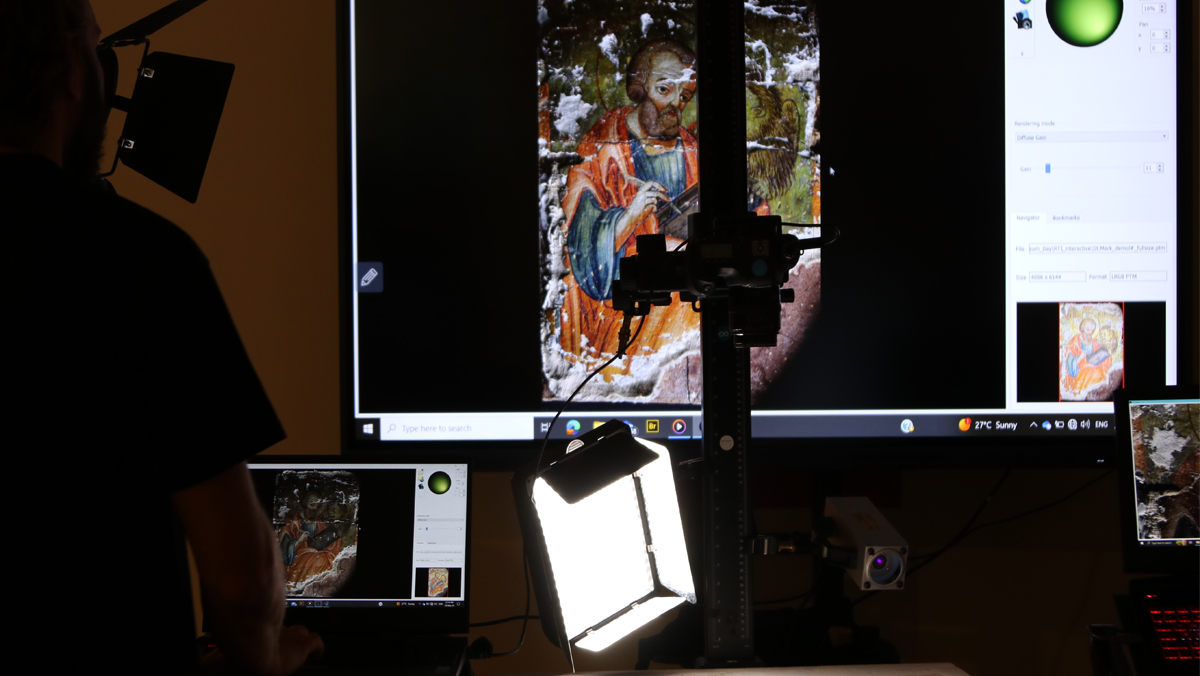Discover our Team’s 2024 Achievements and Major Contributions to Cultural Heritage Research.
2024 has been a remarkable year for APAC Labs filled with achievements and contributions to cultural heritage research. Our team made strides across multiple disciplines, pushed boundaries and advanced knowledge. We’’d like to share some highlights from the team on their year at APAC Labs.
PhD candidate Soodabeh Sajadi delved into the world of conservation-restoration, using multispectral photography for diagnostics and tracing the history of Cypriot Byzantine icons. This innovative approach offered new insights into the preservation of these priceless artefacts.
Fellow PhD candidate Mehmet Ozerenler conducted an in-depth preliminary examination of chipped stone tools from the Epi-Paleolithic site of Akrotiri-Aetokremnos. By collecting samples for use-wear analysis, Mehmet's work sheds light on early human activities and their relationship with Pleistocene dwarf fauna in Cyprus.
Nicolette Levy continued work on her PhD thesis which explores the role of the artist as an active agent in Medieval Cypriot society. She’s been studying a unique depiction of an icon painted inserted in a vita icon of St. John Lampadistis and his inclusion in other parts of the saint’s visual narrative.
Researchers Rahaf Orabi and Valentina Vassallo contributed to the Atrium project by developing digital workflows that enhance collaboration among researchers and improve public access to digital materials. Their work reflects a year defined by collaboration, which led to significant and exciting results across all our projects.
Research Assistant Antonia Agapiou contributed to the European project ANCHISE with fellow researcher Valentina, which aimed to develop tools to fight the illicit trafficking of cultural heritage. Antonia also completed her second master’s degree and began an exciting journey for a PhD!
PhD student Mehmetcan Soyluoglu’s work centred on the Sourp Magar Monastery, documenting and digitising this historic site which is also the focus of his PhD. Mehmetcan also contributed to other digital heritage projects like ECHOES, showcasing the role of technology in preserving endangered monuments.
PhD student Athanasios Koutoupas utilised 3D documentation to study Shatby’s Ancient Necropolis, presenting his findings at multiple conferences and emphasising its importance for cultural heritage preservation.
STARC Senior Research Technical Specialist Marina Faka led two important and challenging UNDP projects this year furthering her skills and years of expertise, while also getting the chance to visit and document these important sites.
Research Assistant Andriana Nikolaidous’s work documented the studios of Cypriot artists, exploring how these creative spaces influence the life and work of the artists, offering unique insights into the interplay between space and creativity.
Marie-Curie recipient Dilek Özkan-Pantazis undertook field research on the fortresses of the Peloponnese, sharing her findings at international conferences, making her work more accessible to scholars and the public alike.
Senior Research Technical Scientist (STARC) Avgoustinos Avgousti integrated the Clowder Framework, developed by the National Center for Supercomputing Applications (NCSA) at the University of Illinois Urbana-Champaign, into digital humanities research, streamlining data management and collaboration for digital heritage projects.
STARC Senior Research Technical Scientist Ropertos Georgiou employed advanced imaging technologies to visualise ancient papyrus, clay seals, and coins from the Hellenistic-Roman and Ptolemaic periods. This work, in collaboration with the Cyprus Department of Antiquities, will enrich the new Cyprus Archaeological Museum’s narrative and bring ancient Cypriot civilizations to life for visitors.
As we look back on 2024, we are proud of the contributions our team has made in cultural heritage research. This year of collaboration and innovation sets a strong foundation for what’s to come in 2025. Thank you for following our journey!
